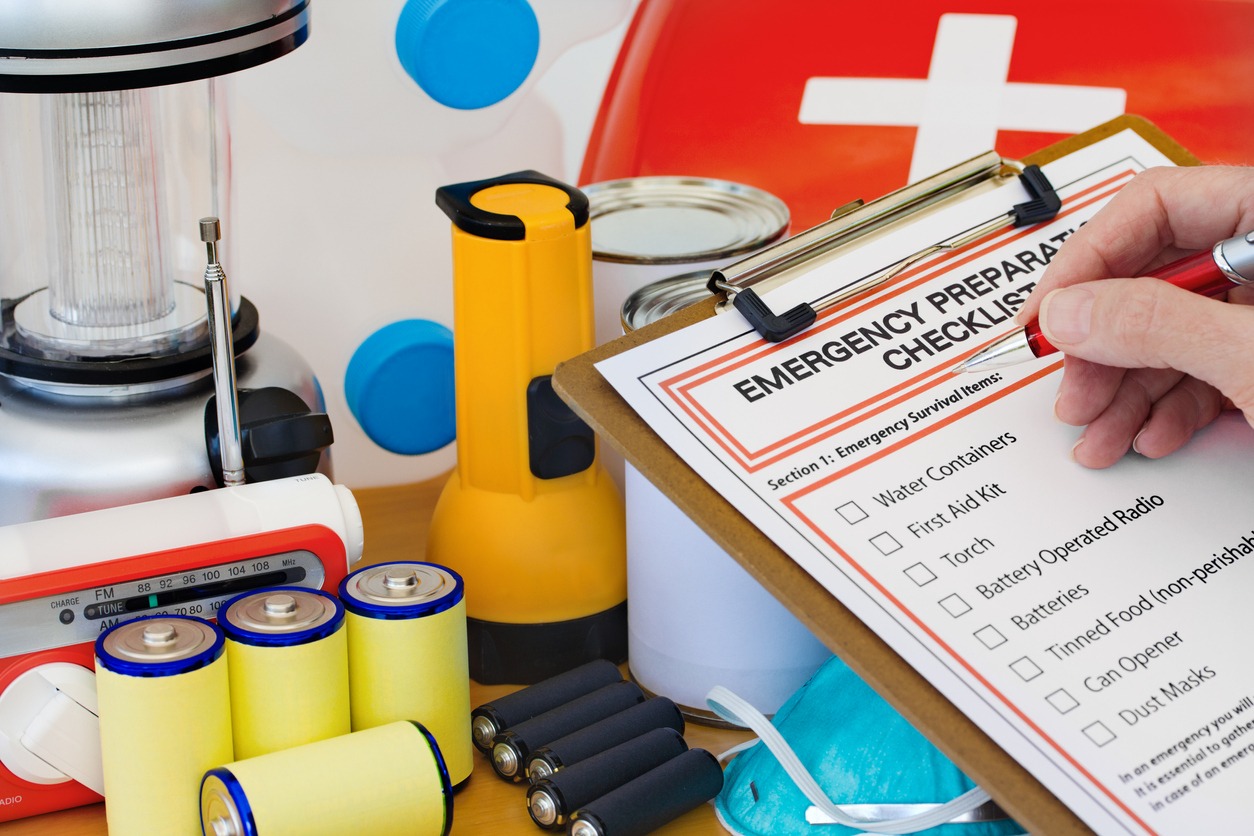Fireproofing Your Home and Property: How to Prepare for a Wildfire
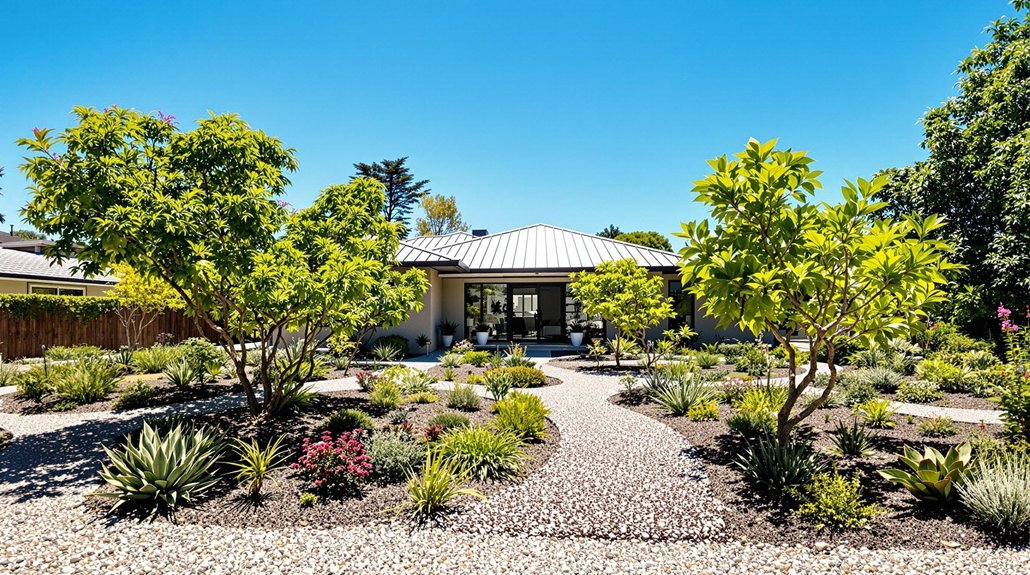
Wildfires can ignite and spread with little warning, threatening homes, neighborhoods, and entire communities. If you live in a wildfire-prone area, waiting until flames are nearby is too late. The good news? Taking proactive steps now can significantly reduce your risk.
In this guide, you’ll learn practical, proven strategies to help fireproof your home and property. Whether you're a homeowner, renter, or property manager, these steps can make your space safer and more resilient when wildfire season hits.
| Fireproofing Strategy | Description |
|---|---|
| Creating Defensible Space | - Maintain a 30-foot buffer zone free of flammable materials - Space trees 10 feet apart and prune branches - Keep lawns trimmed and well-watered - Use gravel or stone instead of mulch near the house |
| Fire-Resistant Building Materials | - Use metal, tile, or Class A shingles for roofing - Install brick or cement board siding - Choose dual-pane tempered glass windows - Keep siding at least 6 inches off the ground - Use noncombustible gutter covers and keep roofs clear of debris |
| Protecting Openings | - Install 1/8-inch metal mesh screens on vents - Use tempered glass and fiberglass window screens - Install solid, fire-rated doors with self-closing mechanisms - Inspect seals and screens regularly |
| Vegetation Management | - Trim tree branches 10 feet above the ground - Keep shrubs under 18 inches in height - Replace flammable mulch with nonflammable materials - Maintain 30–100 feet of defensible space depending on terrain |
| Gutters, Patios, and Decks | - Clean gutters regularly; use noncombustible covers - Remove combustible items from patios and decks - Use fire-resistant materials in outdoor structures - Keep surrounding areas free of clutter and fuel |
| Water Sources | - Install cisterns, rain barrels, or use pools for backup water - Keep 1,000 gallons of water available if possible - Use irrigation systems to maintain greenbelts - Regularly maintain all water systems |
| Emergency Access | - Ensure driveways and roads are at least 10 feet wide - Use reflective street signs and visible house numbers - Maintain vegetation along access routes - Provide turnaround space for fire trucks on long driveways |
Creating a Defensible Space Around Your Home
Establishing a defensible space around your home is crucial in protecting it from wildfires. Start by removing flammable materials and maintaining a healthy greenbelt within 30 feet of your property. This buffer zone slows down approaching fires and reduces fire risk.
Space trees at least 10 feet apart, and prune branches so they’re at least 6 inches off the ground, eliminating ladder fuels that can spread fire to the tree crowns. Clear away dead vegetation and ground litter, as these ignite easily.
Keep lawns trimmed to four inches and well-watered. Swap traditional mulch for nonflammable landscaping like gravel or stone within 5 feet of your home. Regularly update kits to check for expired food and adapt to seasonal changes. This thorough property preparation greatly minimizes wildfire hazards.
Choosing Fire-Resistant Roofing and Siding Materials
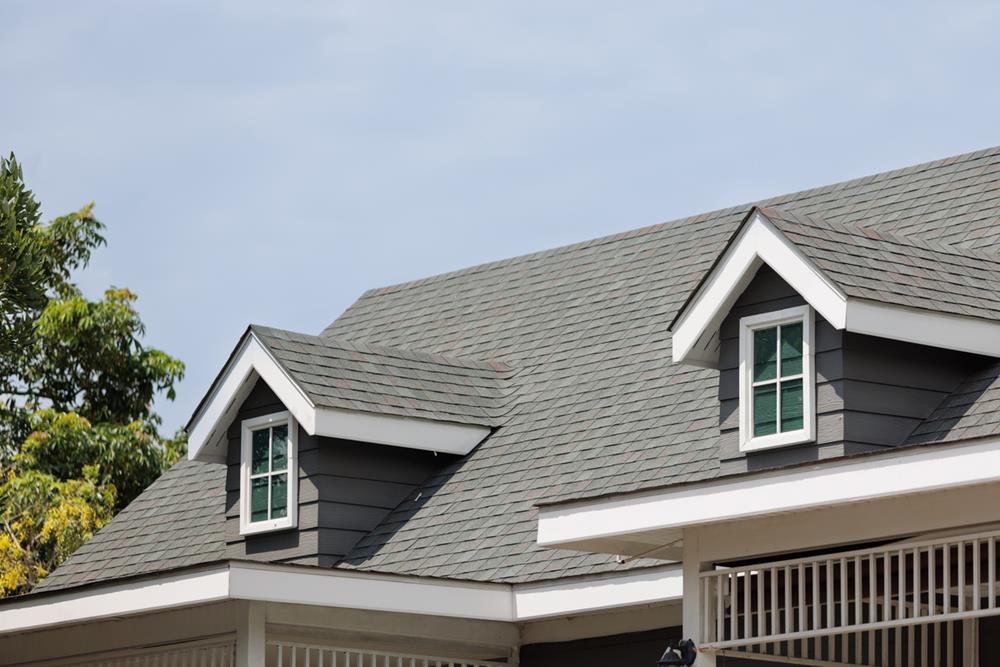
After preparing a defensible space around your home, it's crucial to focus on the materials that make up the structure itself.
Choosing fire-resistant roofing like metal, tile, or Class A shingles helps reduce the risk of ignition from sparks or embers traveling up to half a mile.
For siding, consider fireproof options such as brick or cement board to improve durability and minimize property loss.
Installing dual-pane windows with tempered glass effectively reduces radiant heat exposure and prevents ember entry.
To further protect your home, keep siding at least 6 inches off the ground to reduce ignition risk from burning grass.
Finally, maintain your roof and use noncombustible gutter covers to prevent debris buildup and minimize fire hazards.
Protecting Vents, Windows, and Doors From Embers
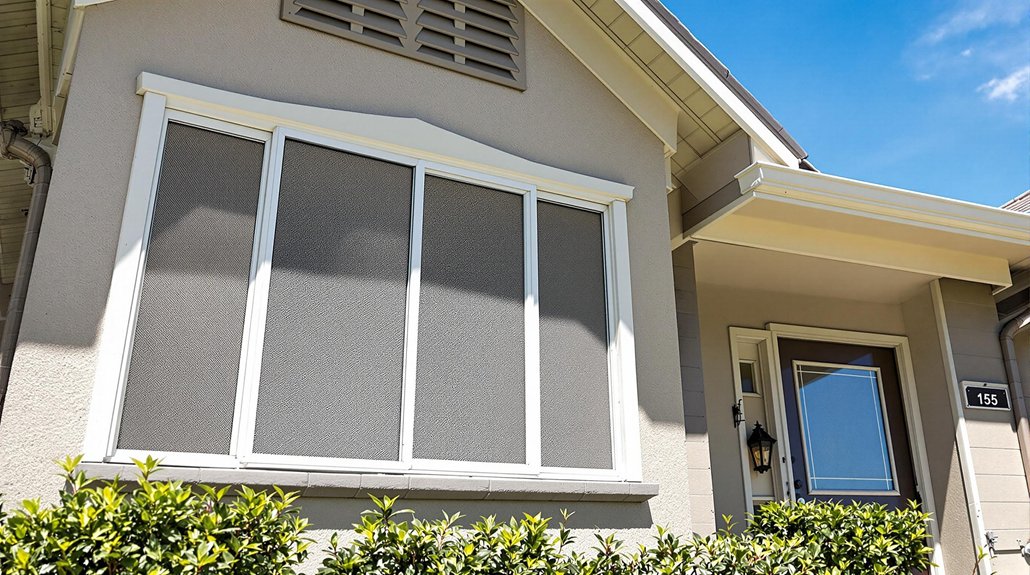
In regard to wildfire protection, even the smallest openings in your home can present considerable risks. Installing 1/8-inch metal mesh screens on vents will prevent embers from slipping inside and igniting your home.
Upgrade your windows to dual- or multi-pane options made with tempered glass to protect against radiant heat and flying embers. For added defense, use plastic-clad fiberglass screens that maintain both visibility and ventilation.
Make sure your doors are solid and constructed from fire-resistant materials; consider self-closing mechanisms to limit airflow and potential flame spread. Regular inspection is essential—check screens and seals around windows and doors frequently to make certain they're intact and ready for wildfire season.
Taking these steps will appreciably enhance your home's ember resistance. To ensure safety during blackouts caused by wildfires, consider installing LED emergency lights which are energy-efficient and durable, providing reliable illumination when needed.
Managing Trees, Shrubs, and Vegetation Effectively
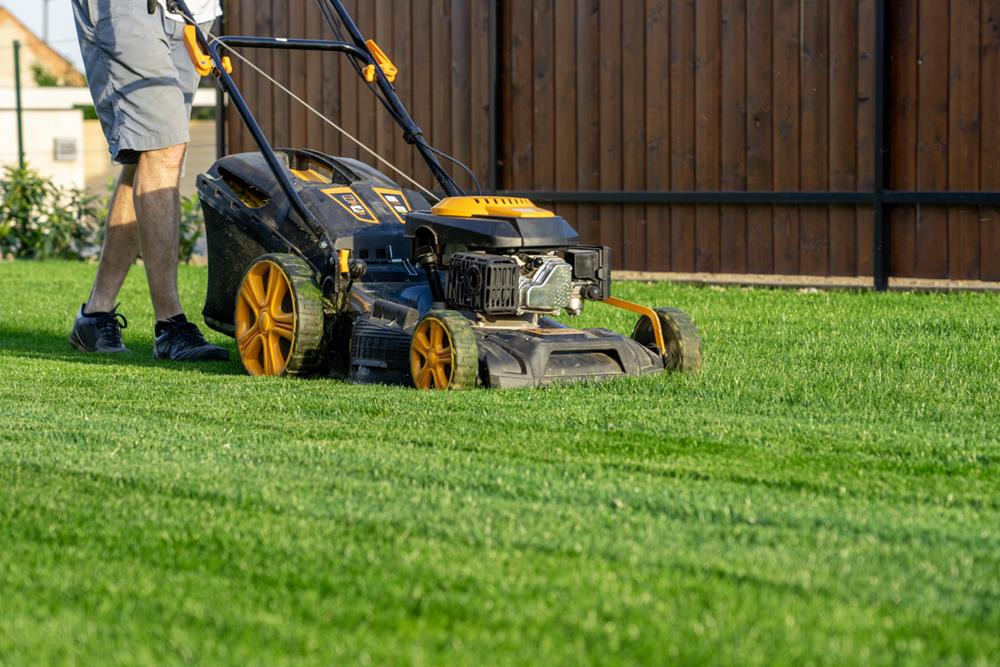
While the beauty of lush greenery adds charm to any home, it can also pose a significant fire risk if not managed carefully.
To manage trees effectively, verify they're spaced at least 10 feet apart with branches trimmed 10 feet above the ground, preventing fire from reaching the canopy. Regularly remove dead vegetation, as it easily ignites.
Keep shrubs under 18 inches in height and replace flammable mulch within 5 feet of your home with nonflammable materials.
Establish defensible space by maintaining a safe zone of 30 feet in less wooded areas, extending up to 100 feet in heavily wooded zones.
For tailored advice, consult local forestry professionals to improve wildfire resistance through strategic vegetation management.
In urban areas, limited natural resources necessitate effective food storage strategies, making proactive planning crucial for overall emergency preparedness.
Maintaining Gutters, Patios, and Decks
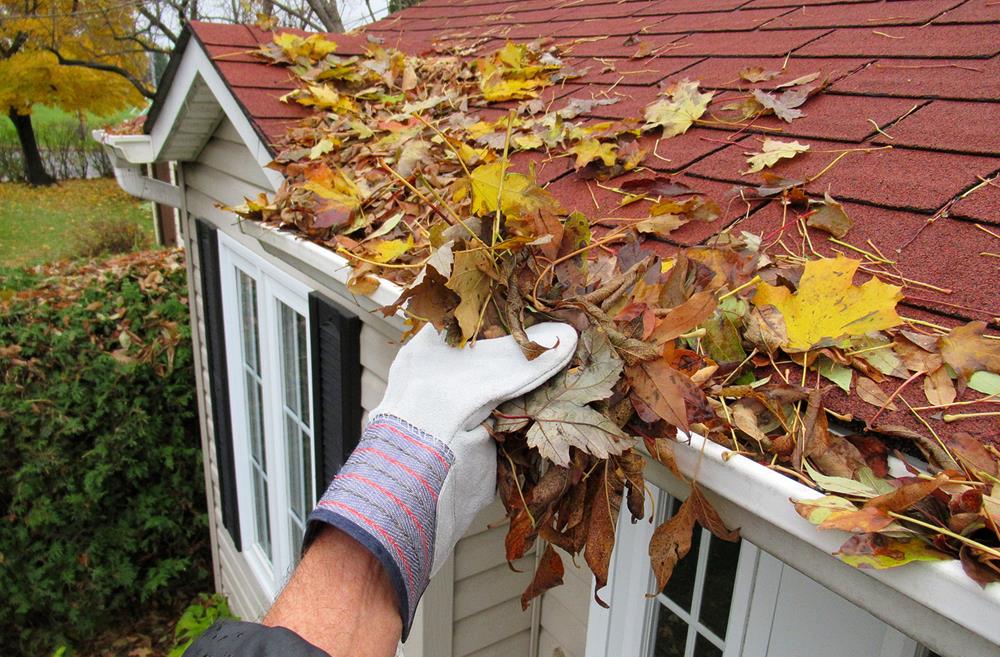
Protecting your home from wildfires isn't just about managing vegetation; it's also about paying attention to other areas like gutters, patios, and decks.
Start by regularly maintaining gutters to clear them of leaves and debris, which can ignite easily and increase fire risk. Consider installing noncombustible gutter covers to prevent buildup and improve fire safety.
For patios and decks, remove any combustible items and use fire-resistant materials in their construction. This approach minimizes the risk of ignition from embers or radiant heat during a wildfire event.
Keeping these areas clean and organized is vital; clutter can serve as fuel, intensifying the danger. By focusing on these elements, you improve your home’s fireproofing and readiness against wildfires.
Installing and Utilizing Additional Water Sources
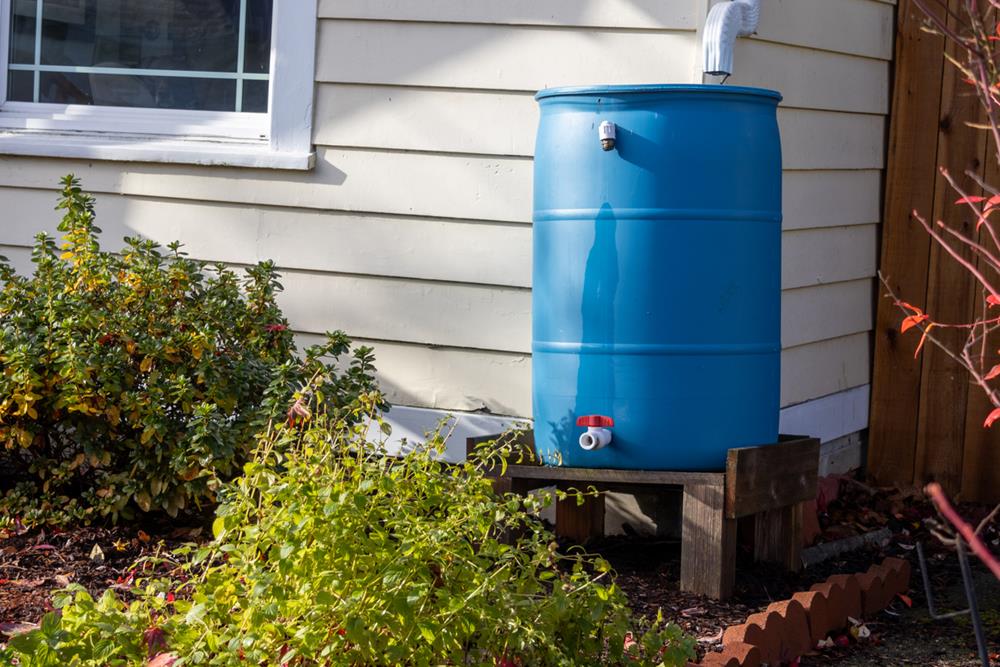
To strengthen your home's defenses against wildfires, consider installing and utilizing supplementary water sources. A pool serves as a significant asset, providing firefighters with immediate access to water.
Cisterns and rain barrels act as alternative water sources, crucial during a wildfire when traditional supplies might fail. Aim to have at least 1,000 gallons on hand, enhancing your property’s fire defense and helping create a defensible space.
Regular maintenance of these water sources guarantees they're ready when wildfire season strikes.
Furthermore, install an irrigation system to maintain an irrigated greenbelt around your home. This strategically watered vegetation can slow advancing fires, offering a buffer.
Ensuring Clear and Quick Access for Emergency Responders
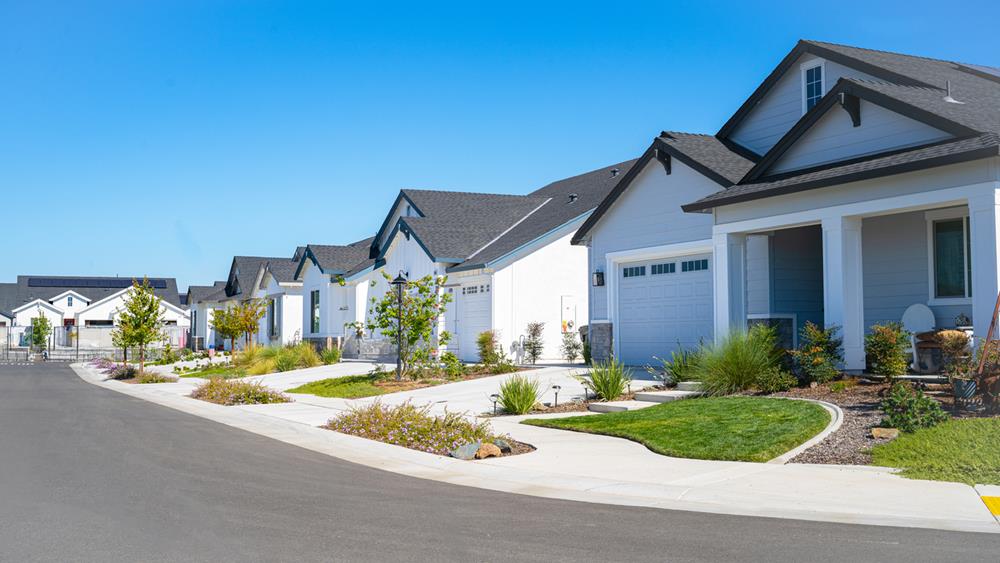
How can you guarantee that emergency responders reach your home swiftly during a wildfire? Start by ensuring clear access with roads at least 10 feet wide to accommodate fire trucks.
Reflective street signs should be at least 3 inches tall for visibility, and your house numbers must be clearly visible from the street. This facilitates quick identification, essential for public safety.
Maintain vegetation clearance along driveways and access roads to guarantee unobstructed passage. For homes on dead-end streets or with long driveways, implement turnaround areas so fire trucks can maneuver easily.
These steps not only help emergency responders navigate efficiently but also prioritize your safety and the protection of your property during a wildfire event.



